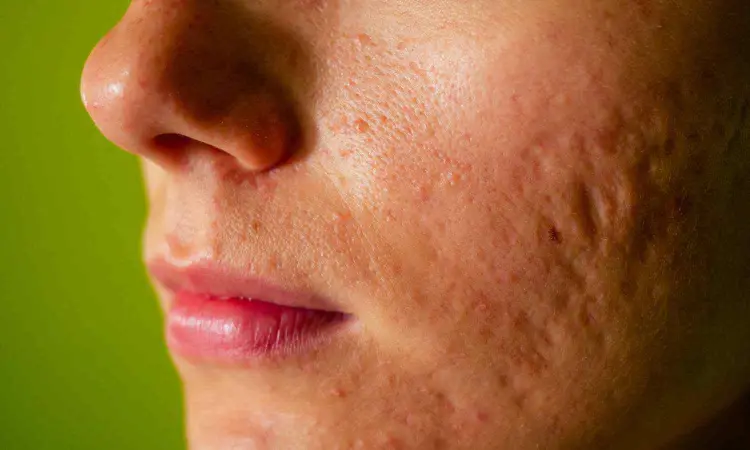- Home
- Medical news & Guidelines
- Anesthesiology
- Cardiology and CTVS
- Critical Care
- Dentistry
- Dermatology
- Diabetes and Endocrinology
- ENT
- Gastroenterology
- Medicine
- Nephrology
- Neurology
- Obstretics-Gynaecology
- Oncology
- Ophthalmology
- Orthopaedics
- Pediatrics-Neonatology
- Psychiatry
- Pulmonology
- Radiology
- Surgery
- Urology
- Laboratory Medicine
- Diet
- Nursing
- Paramedical
- Physiotherapy
- Health news
- Fact Check
- Bone Health Fact Check
- Brain Health Fact Check
- Cancer Related Fact Check
- Child Care Fact Check
- Dental and oral health fact check
- Diabetes and metabolic health fact check
- Diet and Nutrition Fact Check
- Eye and ENT Care Fact Check
- Fitness fact check
- Gut health fact check
- Heart health fact check
- Kidney health fact check
- Medical education fact check
- Men's health fact check
- Respiratory fact check
- Skin and hair care fact check
- Vaccine and Immunization fact check
- Women's health fact check
- AYUSH
- State News
- Andaman and Nicobar Islands
- Andhra Pradesh
- Arunachal Pradesh
- Assam
- Bihar
- Chandigarh
- Chattisgarh
- Dadra and Nagar Haveli
- Daman and Diu
- Delhi
- Goa
- Gujarat
- Haryana
- Himachal Pradesh
- Jammu & Kashmir
- Jharkhand
- Karnataka
- Kerala
- Ladakh
- Lakshadweep
- Madhya Pradesh
- Maharashtra
- Manipur
- Meghalaya
- Mizoram
- Nagaland
- Odisha
- Puducherry
- Punjab
- Rajasthan
- Sikkim
- Tamil Nadu
- Telangana
- Tripura
- Uttar Pradesh
- Uttrakhand
- West Bengal
- Medical Education
- Industry
New wavelength-dependent indicators improve efficacy of spot-on laser treatment for skin blemishes: Study

Japan: An Osaka Metropolitan University-led research group has developed an index of the threshold energy density, known as fluence, and the dependent wavelength for picosecond lasers. This will help improve efficacy and reduce complications in people bothered by skin blemishes who might turn to laser treatment.
Picosecond lasers have in recent years been used to remove pigmented lesions.
These lasers deliver energy beams in pulses that last for about a trillionth of a second.
The lasers target melanosomes, which produce, store, and transport the melanin responsible for pigment.
Postdoctoral Fellow Yu Shimojo of OMU's Graduate School of Medicine and Specially Appointed Professor Toshiyuki Ozawa and Professor Daisuke Tsuruta of the school's Department of Dermatology were among the researchers who developed this first picosecond laser index for each of the wavelengths used in clinical practice in treating pigmented lesions.
The key findings of the study were as follows:
- The threshold fluences were determined to be 0.95, 2.25, 2.75, and 6.50 J/cm² for 532-, 730-, 785-, and 1064-nm picosecond lasers, respectively.
- The numerical results quantitatively revealed the relationship between irradiation wavelength, incident fluence, and spot size required to disrupt melanosomes distributed at different depths in the skin tissue.
- The calculated irradiation parameters were consistent with clinical parameters that showed high efficacy with a low incidence of complications.
Comparing previously reported clinical studies, the researchers confirmed that clinical results showing low complication rates and high efficacy can be explained based on these wavelength-dependent indicators.
"The use of this indicator is expected to play an important part in setting irradiation conditions in clinical practice," Postdoc Fellow Shimojo said. "In addition, the implementation of picosecond laser therapy based on scientific evidence, rather than relying solely on physicians' experience, is expected to improve the safety and effectiveness of the treatment."
Reference:
Yu Shimojo, Takahiro Nishimura, Daisuke Tsuruta, Toshiyuki Ozawa, Henry Hin Lee Chan, Taro Kono. Wavelength‐dependent threshold fluences for melanosome disruption to evaluate the treatment of pigmented lesions with 532‐, 730‐, 755‐, 785‐, and 1064‐nm picosecond lasers. Lasers in Surgery and Medicine, 2024; DOI: 10.1002/lsm.23773.
Dr Kamal Kant Kohli-MBBS, DTCD- a chest specialist with more than 30 years of practice and a flair for writing clinical articles, Dr Kamal Kant Kohli joined Medical Dialogues as a Chief Editor of Medical News. Besides writing articles, as an editor, he proofreads and verifies all the medical content published on Medical Dialogues including those coming from journals, studies,medical conferences,guidelines etc. Email: drkohli@medicaldialogues.in. Contact no. 011-43720751


